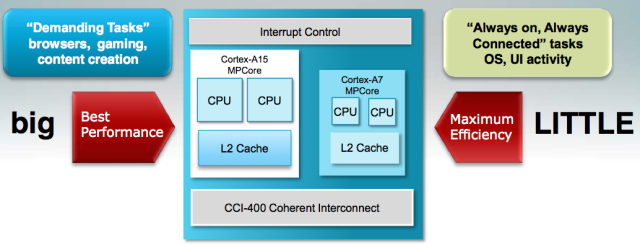Here’s another entry to add to the alphabet soup of processors, chips, and components being bandied about by device makers. ARM, whose A8 core forms the center of a great number of mobile devices, has announced a little brother to their line of higher clockspeed processors. The A7 will form a sort of low-power sidekick to the more powerful A15 and its ilk.
The A7 (no direct relation to Apple’s A4 and A5, though they’re in the same extended family and at some point these naming strategies are going to interact) is built on a 28nm process (compared with the others, made at 40-45nm), meaning it can be both physically smaller and draw less power.
It’s intended to be used for things like always-on services, background checks and downloads for instance, while passing off more CPU-intensive stuff like media and gaming to the bigger chip. While running only the smaller A7, the system would draw significantly less power — up to 70%, they say.

But it wouldn’t be a processing slouch: the die shrink allows it to fit enough transistors that it would provide the performance of today’s superphones in tomorrow’s budget phones. Naturally, the superphones will have advanced as well, though.
It’s certainly not an unprecedented move (NVIDIA has a similar solution using multiple A9s), but ARM is smart to make the processor a modular addition, and of course they’ve designed it to work seamlessly with the faster processors and offload big jobs quickly. They’ve got big players on board to leverage the new “big dog, little dog” architecture, including Broadcom, TI, Freescale, Samsung, and more. Expect plenty of branded chips to have A*-A7 team-up configurations.
Don’t expect them any time soon, though: ARM is aiming for 2013 at the earliest for the new chips to be introduced in products. They’d be aiming at smartphones initially, though of course tablets won’t be far behind. Anandtech has a bit more info and slides from ARM, if you’re interested.
